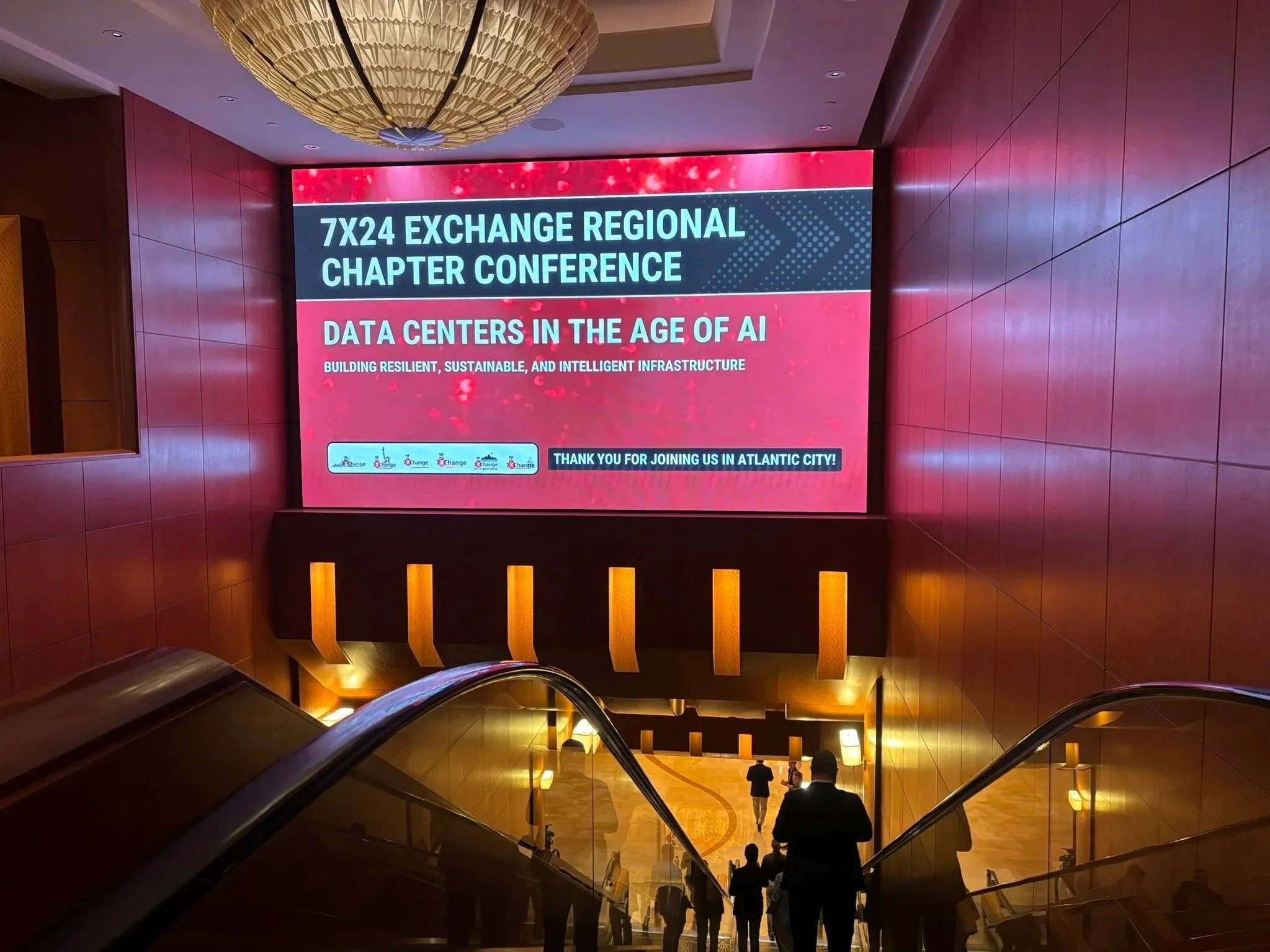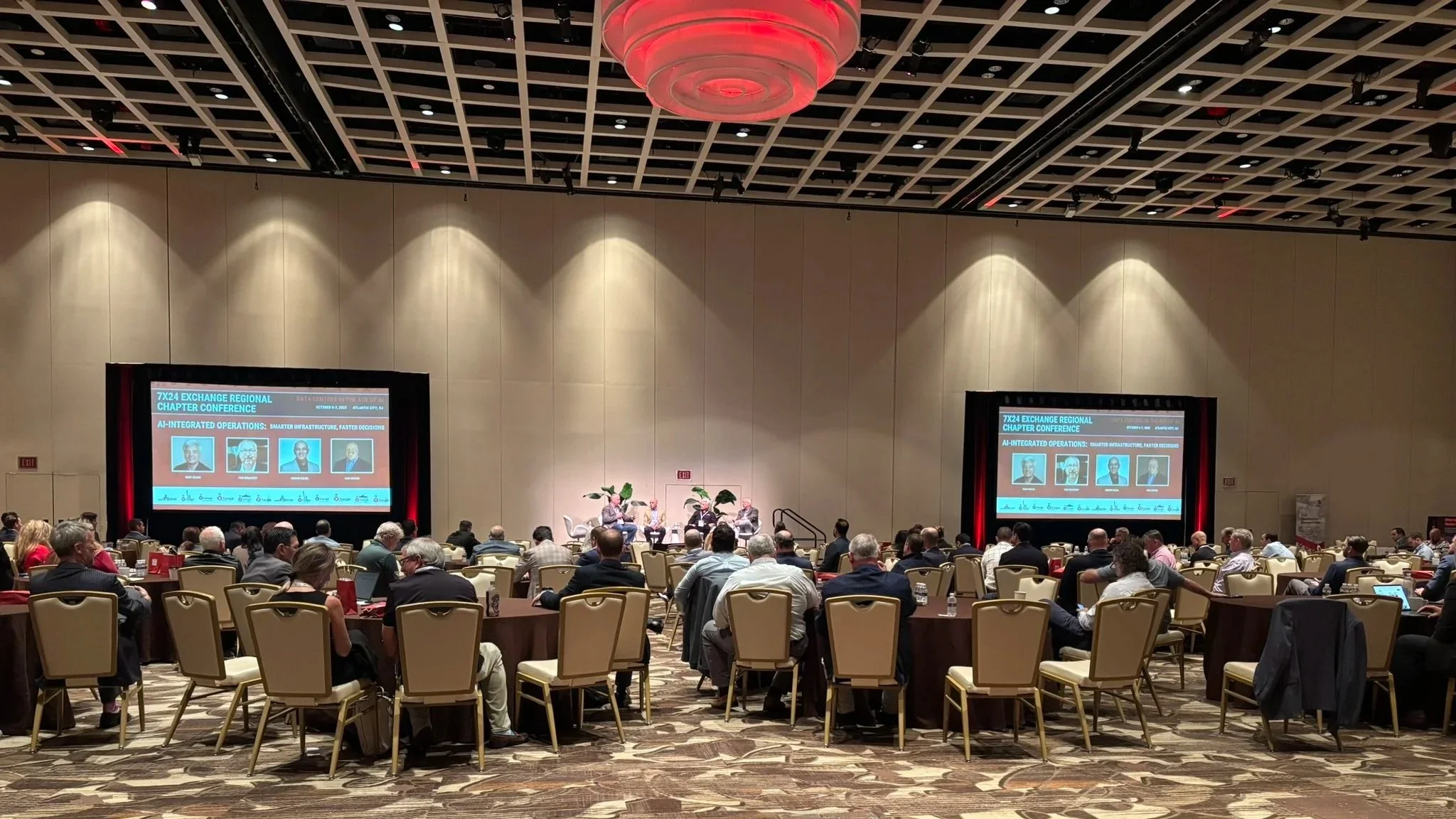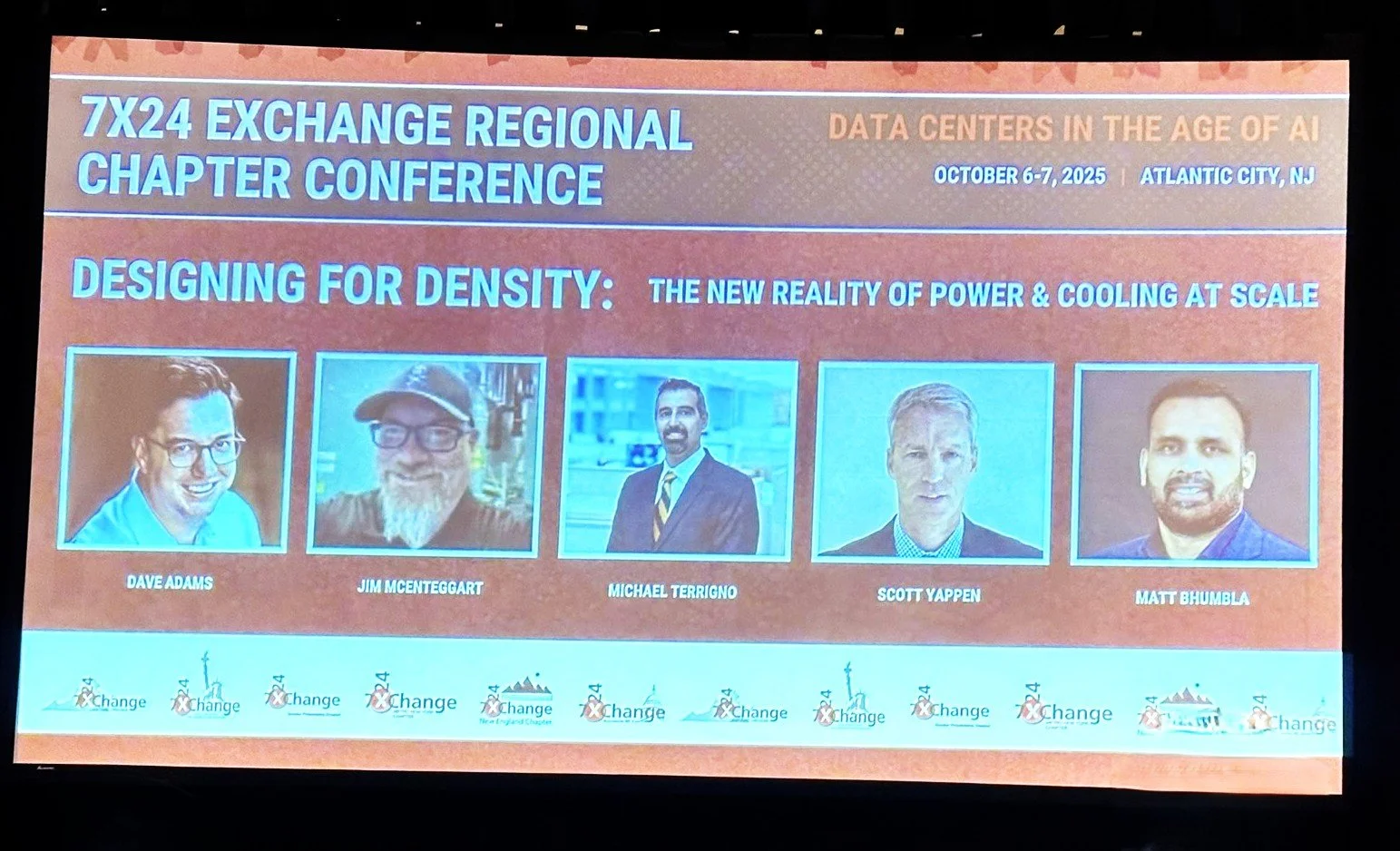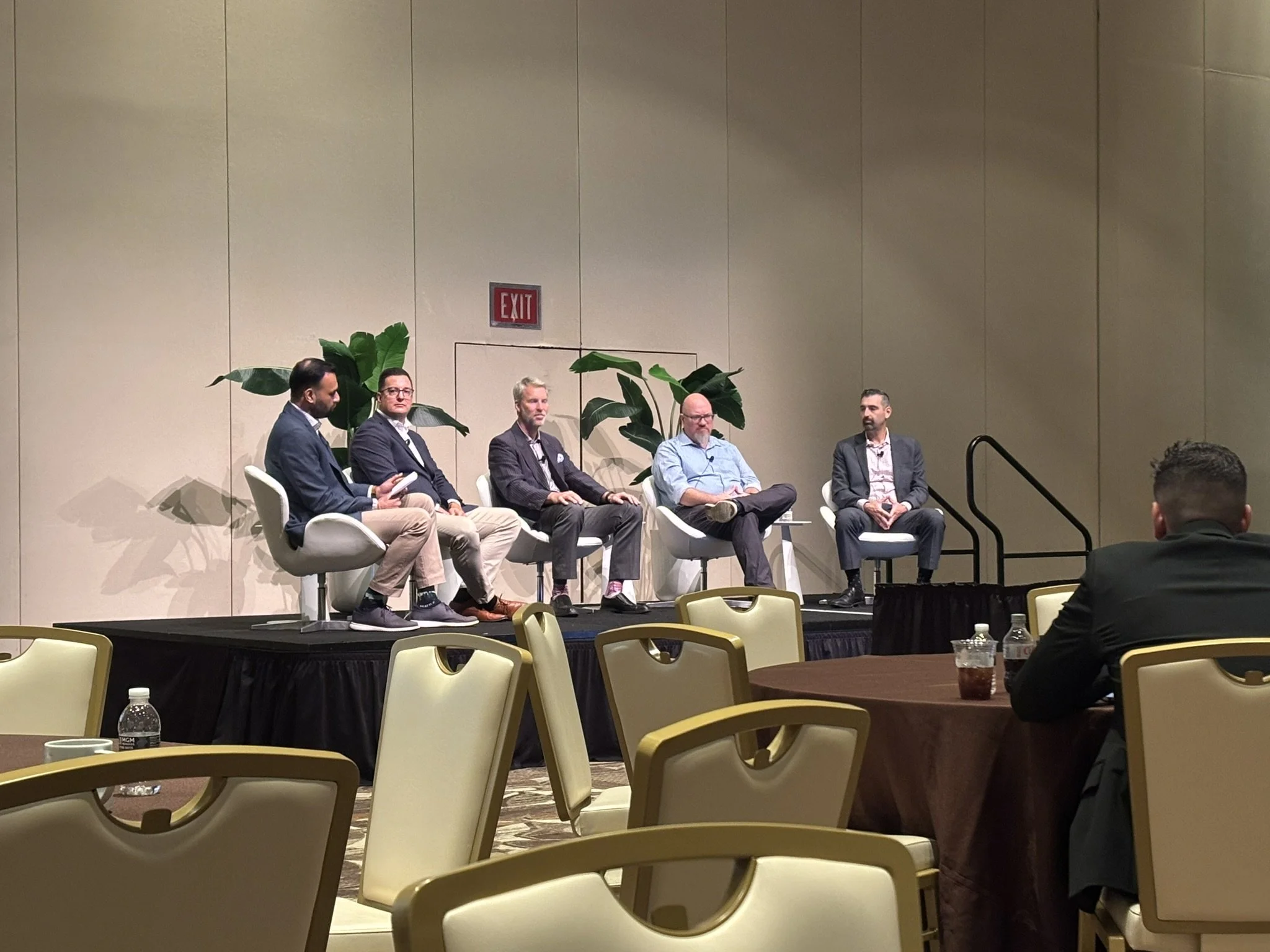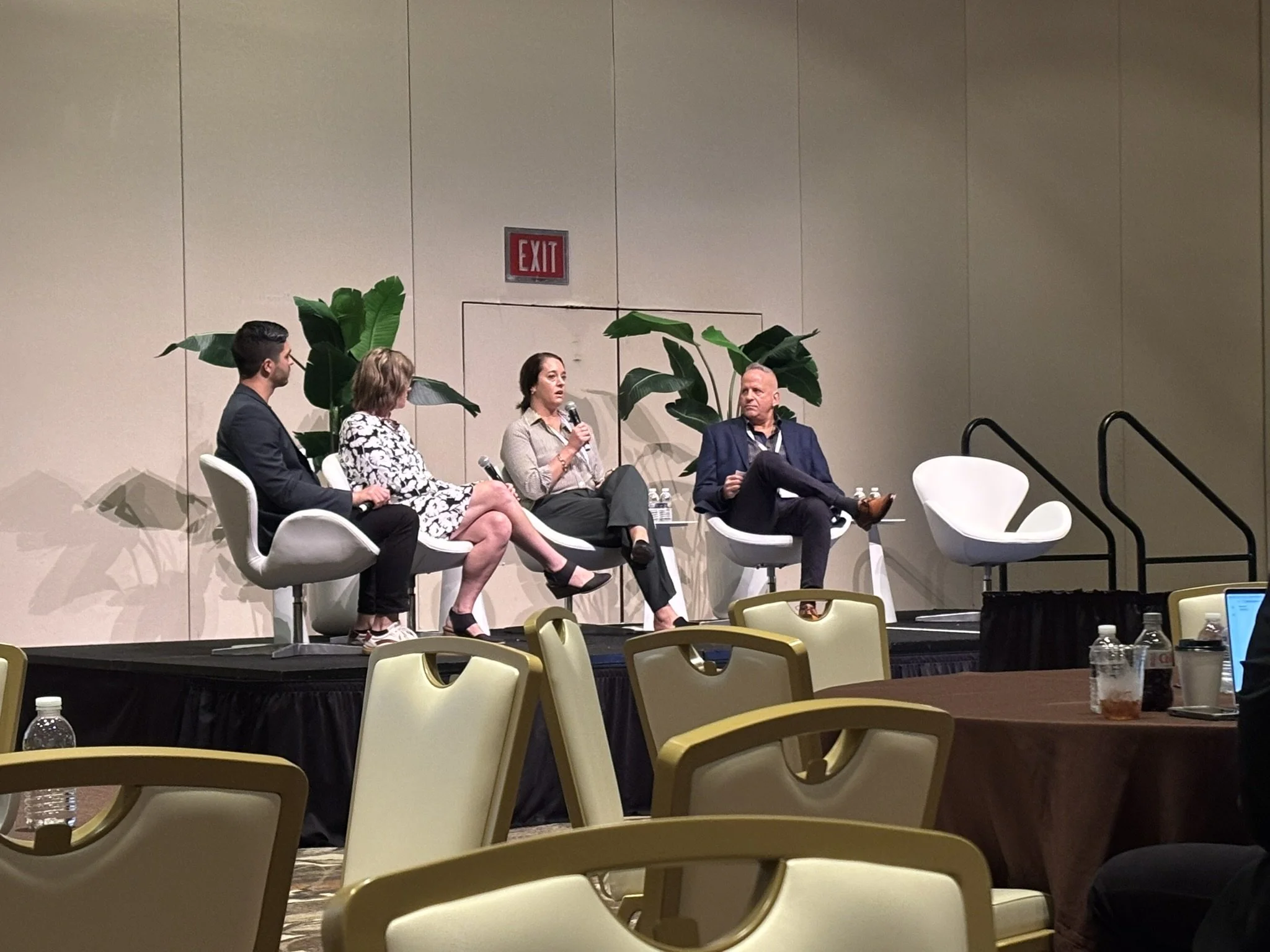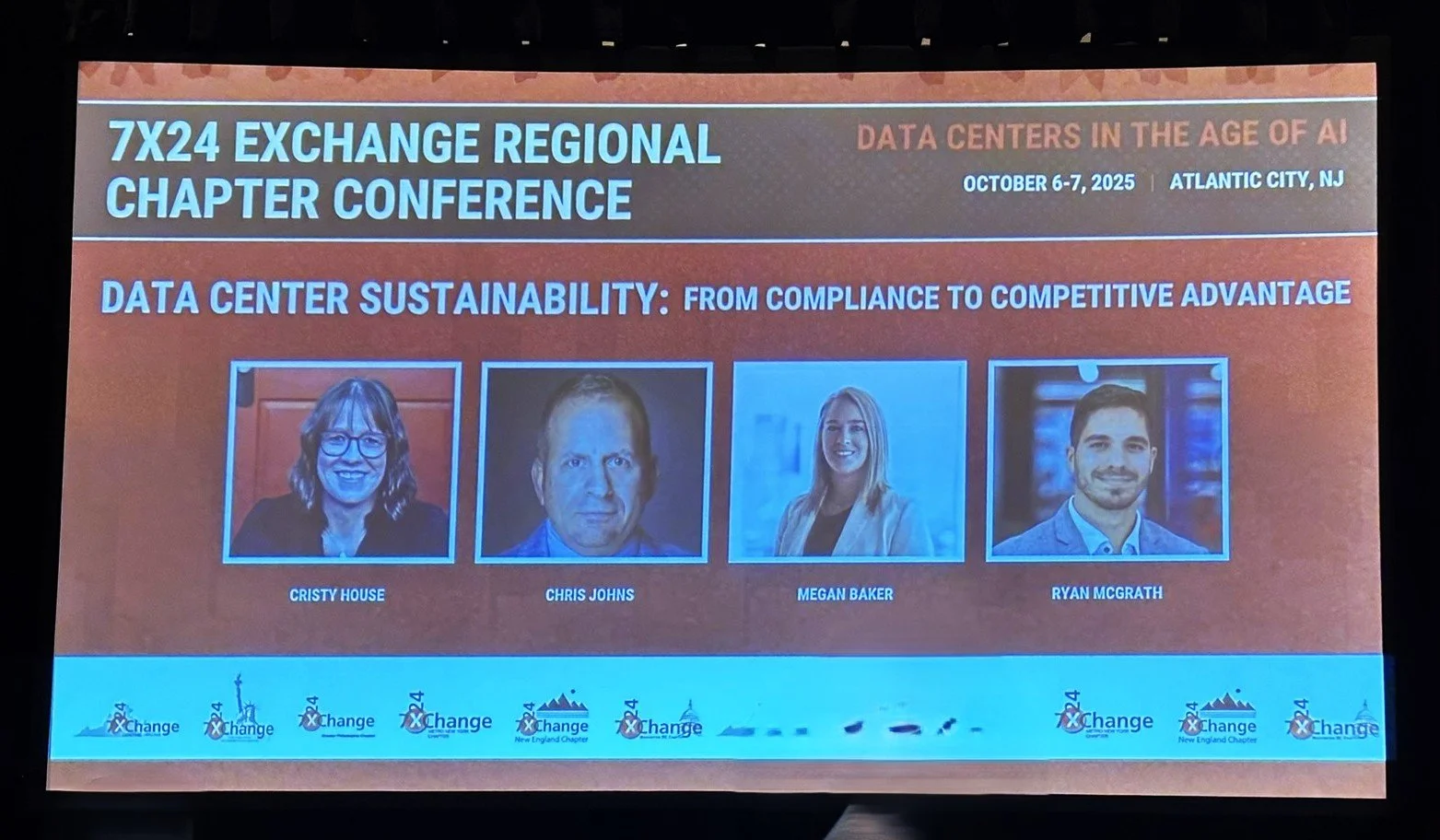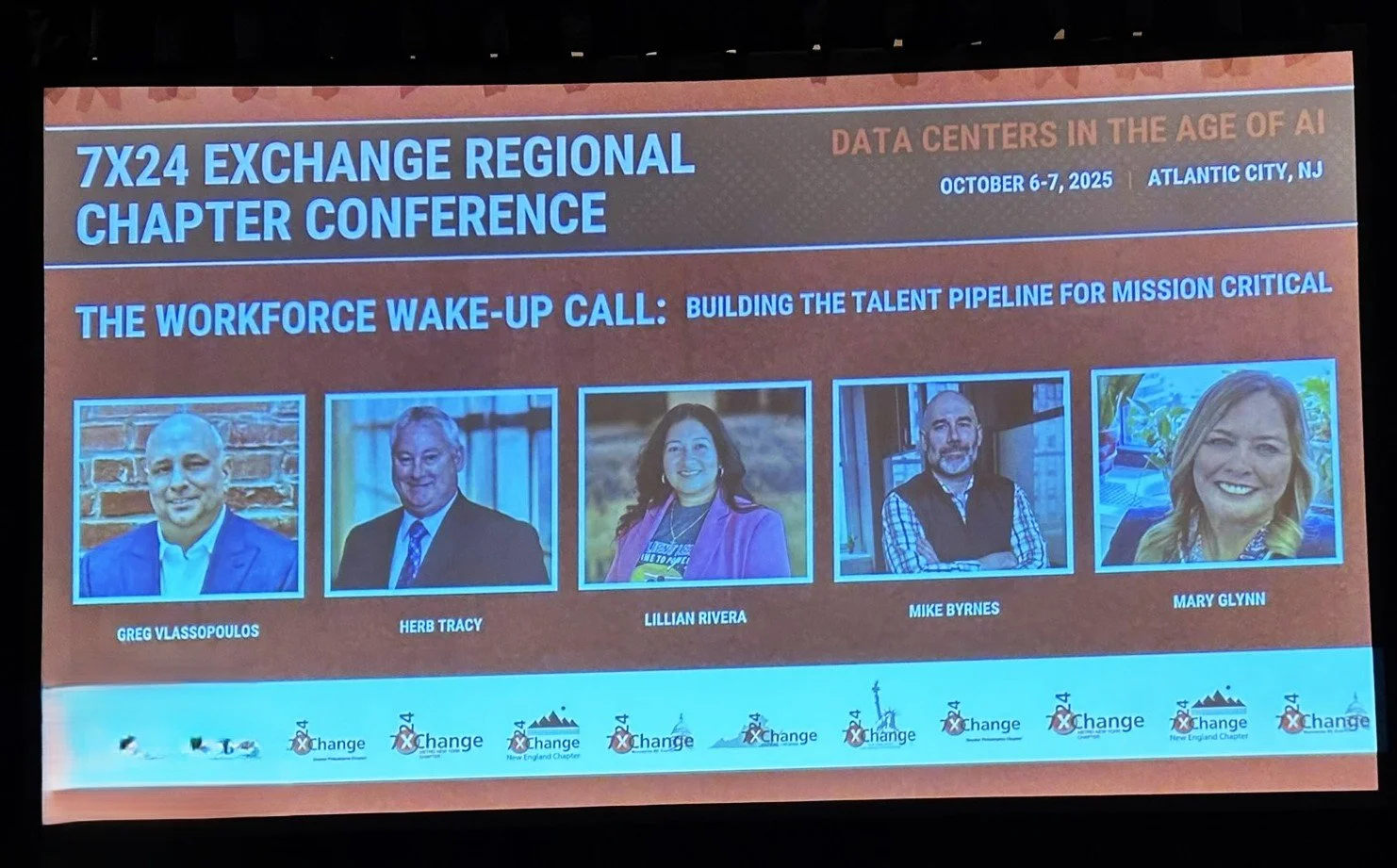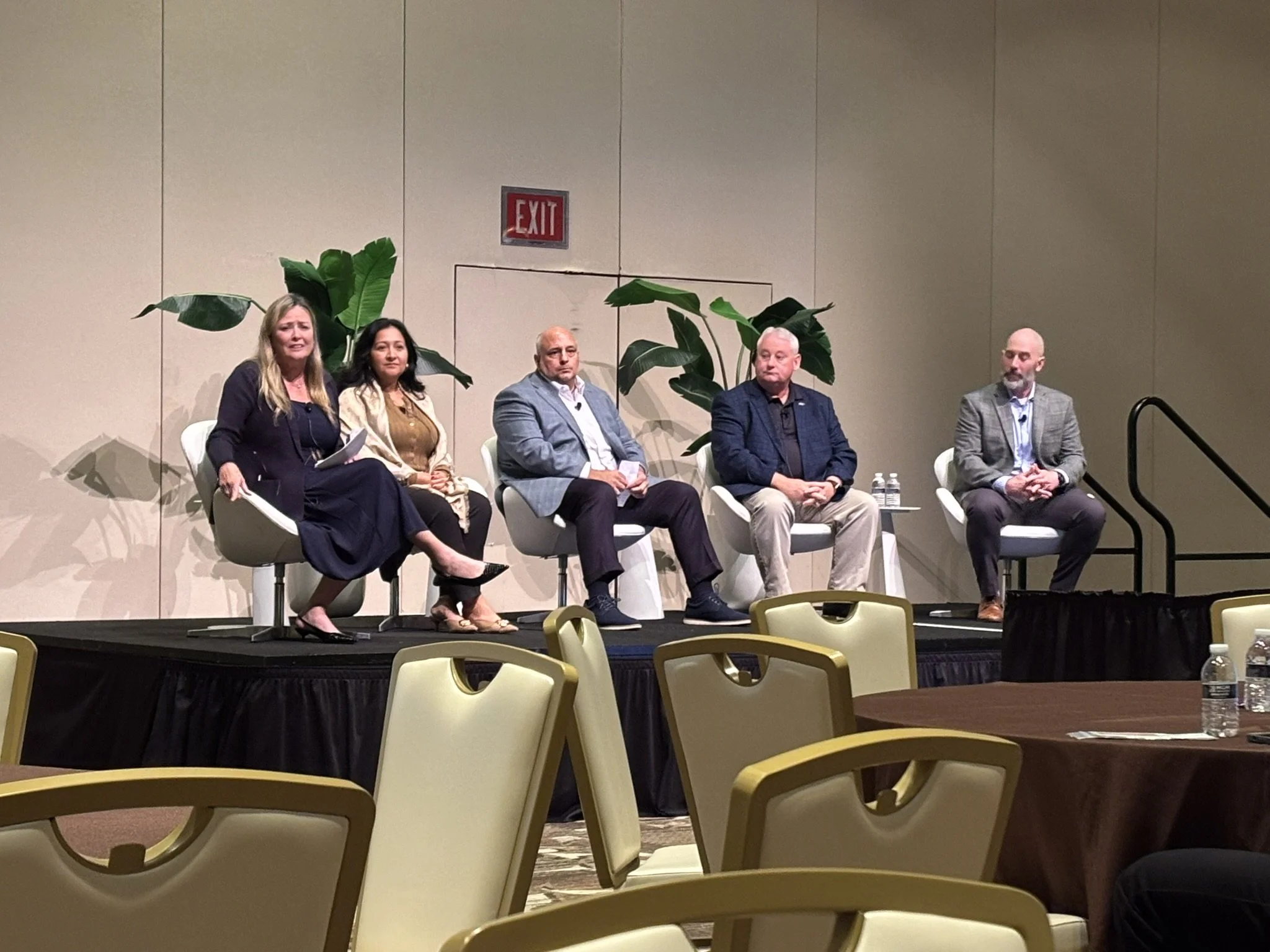Event Insights: 7x24 Exchange Northeast Regional Conference - Where Innovation Meets Infrastructure
Data Centers in the Age of AI: Building Resilient,
Sustainable and Intelligent Infrastructure
October 6–7, 2025 | Borgata Hotel & Casino, Atlantic City, NJ
Get a sneak peek into the conversations that shaped this year’s 7x24 Exchange Northeast Regional Conference.
Wick Fisher White is happy to share highlights and insights from the event, where mission critical professionals came together to discuss the future of data centers and digital infrastructure. The 2025 conference once again brought together leaders from across the data center community—engineers, designers, operators, and innovators—to explore the dynamic intersection of technology, human ingenuity, and collaboration.
This year’s theme, “Where Innovation Meets Infrastructure,” covered various topics such as artificial intelligence, sustainability, and workforce.
Check out key takeaways from select conference sessions that continue to influence how we design, build, and operate mission-critical environments.
Designing for Density: The New Reality of Power and Cooling at Scale
The first technical session, “Designing for Density,” tackled one of the industry’s most pressing challenges: meeting skyrocketing compute demand and AI-driven workloads while balancing power, cooling, and efficiency.
Panelists emphasized that rack densities once peaking at 15–20 kW now surpass 120–125 kW, with some future deployments planning for 1 MW per rack. This shift requires a complete rethink of how power, cooling, and infrastructure scale together.
Power: From Grid Constraints to On-Site Generation
As utilities struggle to meet growing demand, on-site generation is increasingly standard. Experts explained how reciprocating engines, gas turbines, and microgrids can deliver up to 250 MW of reliable power within two years, bridging gaps left by traditional grids. Advances in digitized switchgear and IEC 61850 protocols allow intelligent orchestration of multiple energy sources—grid, generator, or renewable—enhancing reliability and operational flexibility.
Cooling: Liquid, Air, and Everything In Between
Liquid cooling is now essential rather than experimental, with many facilities targeting 70% liquid cooling capacity while retaining hybrid flexibility. This introduces challenges in underfloor congestion, modular fabrication, and containment integration, requiring engineers to coordinate across disciplines. Heat rejection discussions highlighted the balance between efficiency, water use, and space—hybrid and dry systems are gaining traction in water-scarce regions despite slightly lower efficiency.
AI Load Variability and Smart Optimization
AI-driven workloads create unpredictable energy spikes, prompting the adoption of AI-assisted analytics and battery energy storage systems (BESS) to smooth loads, enhance grid coordination, and maintain stability.
Key Takeaway:
Next-generation data centers demand flexibility and creativity—combining proven engineering fundamentals with advanced modeling, analytics, and close collaboration among mechanical, electrical, and architectural teams. Adaptability has become the benchmark for resilient design.
DataCenter Sustainability: From compliance to competitive advantage
The second session, “Data Center Sustainability: From Compliance to Competitive Advantage,” explored how sustainability has changed from a regulatory requirement into a strategic driver of business value, capital access, and community trust.
Capital and Compliance: Sustainability as a Business Requirement
Panelists noted that sustainability now drives investment decisions: in 2024, over $100 billion in private equity flowed into digital infrastructure, with 90% of deals tied to ESG criteria. Rather than a cost, sustainability is now a core component of business value and capital strategy.
Beyond Reporting: Continuous Improvement Through Data
Panelists also emphasized moving past “alphabet soup” ESG reporting to actionable, science-based targets. AI-enabled building management systems continuously optimize cooling and airflow, turning sustainability from a static metric into a living process that drives measurable performance improvements.
Expanding the Energy Mix
Alternative generation strategies, including co-generation, natural gas fuel cells, hydrogen-powered generators, and Small Modular Reactors (SMRs), are being explored to address grid constraints and reduce carbon impact. The consensus: technology exists; scaling it safely and responsibly is the next challenge.
Site Selection and Community Impact
Brownfield redevelopment, innovative waste heat reuse, and proactive community engagement demonstrate that sustainable design extends beyond operations. Integrating projects into local communities and demonstrating tangible benefits helps secure trust and eases permitting.
Key Takeaway:
Sustainability is now both a competitive advantage and a social responsibility. For design and construction professionals, leveraging these principles informs system selection, operational strategies, and community engagement from day one.
The Workforce Wake-Up Call: Building the Talent Pipeline for Mission Critical
The final session, “The Workforce Wake-Up Call,” addressed the urgent shortage of skilled professionals in mission-critical infrastructure. Panelists highlighted innovative approaches to cultivating the next generation of engineers, technicians, and operators.
Building Awareness Early
Outreach programs targeting high school and college students—through International Data Center Day, Career and Technical Education programs, and free certification courses—introduce careers in data centers early, fostering interest before graduation.
Education Partnerships and Real-World Learning
Programs like BlackRock’s University Challenge, SUNY Maritime College training, and internships with Clune Construction provide hands-on learning that bridges classroom knowledge with industry needs.
Veterans and Skilled Trades
Veteran-focused programs and renewed emphasis on trades—electricians, HVAC technicians, and controls specialists—highlight untapped talent critical to sustaining operations.
Innovation in Training
Virtual and augmented reality simulations, AI-assisted hybrid learning, and modular certification programs accelerate training and readiness for specialized roles in mission critical facilities.
Key Takeaway:
Closing the workforce gap requires coordination, creativity, and inclusivity. Early education, mentorship, and innovative training programs create a resilient talent pipeline that supports technological advancement.
Closing Thoughts
From power density and energy diversification to sustainability and workforce development, the 2025 7x24 Exchange Northeast Regional Conference highlighted that innovation and infrastructure are inseparable.
Technology may power the data center, but it’s the people, collaboration, and shared purpose behind it that drive real progress. At Wick Fisher White, we’re proud to design, commission, and optimize the systems that keep these critical facilities running. The insights shared at this year’s conference offer valuable perspectives for all of us in the design and construction community as we continue building more resilient, efficient, and forward-looking spaces.

